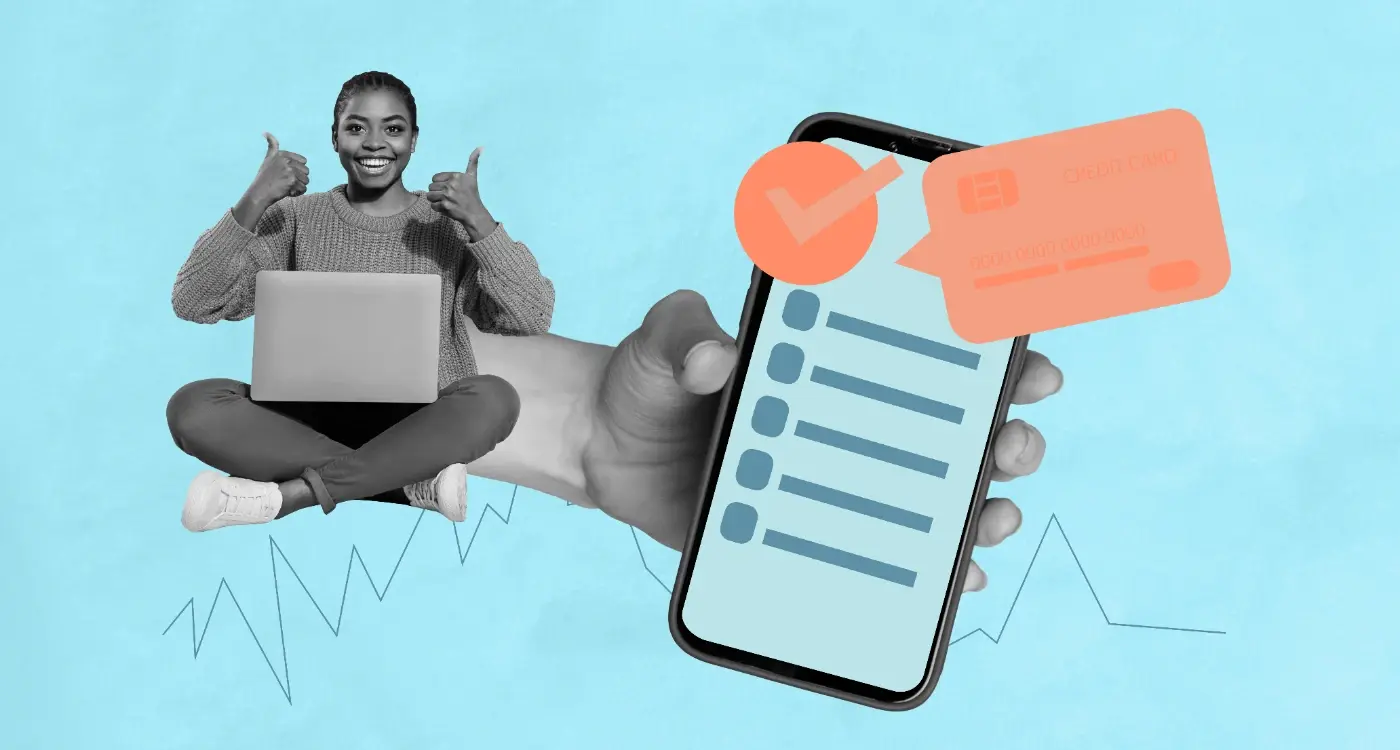How Can I Conduct a Mobile App Feasibility Study?
So, you're thinking about launching a mobile app? That's fantastic! But before you jump into the deep end, it's essential to test the waters first. Conducting a feasibility study may sound a little daunting, but it's a crucial step to ensure your app idea can float, rather than sink. As experts at Glance, we've helped numerous businesses navigate this process, and we're here to guide you through it, too.
Why is a feasibility study so important? Let's break it down:
- It helps you identify potential roadblocks before they become costly problems.
- It provides a clear analysis of the financial investment required.
- It ensures that your app meets market needs and compliance requirements.
- It prepares your business for any operational challenges that might arise.
- It aids in assessing the technical feasibility of your app idea.
A well-conducted feasibility study can be the difference between your app thriving or merely surviving.The Glance Team
By the end of this guide, you'll have a clear understanding of how to conduct a mobile app feasibility study that leaves no stone unturned. Ready to dive in? Let's get started!
Understanding the Importance of a Feasibility Study
At Glance, we believe that diving headfirst into mobile app development without a solid plan is like trying to bake a cake without a recipe – it might be fun but the results will be terrible!! That's where a feasibility study comes to your rescue; it helps you ensure what you want to do is both feasible and that there is market appetite for it.
So, why is a feasibility study so crucial? Imagine investing your time, money, and energy into an app that, ultimately, no one wants or a platform that's technically impossible to build. Heartbreaking, right? A feasibility study helps you dodge these pitfalls by exploring key aspects like market demand, technical requirements, and financial implications. Essentially, it confirms whether your brilliant idea is indeed practical and workable.
Think of a feasibility study as a reality check for your aspiration. It helps you identify potential obstacles early on, giving you a chance to address them before they turn into costly mistakes. Plus, it’s not just about avoiding risks; it’s also about seizing opportunities. By understanding the landscape better, you can fine-tune your strategy, making your app more appealing to your target audience and investors.
And let's be honest, running a business is no walk in the park; you’ve got enough on your plate without the added worry of a doomed app project. With a feasibility study, you're not just taking a leap of faith; you’re making an informed decision. You're setting yourself up for success with clear, actionable insights that guide your project from inception to launch.
Identifying Your Business Needs and Goals
Before diving head-first into creating a mobile app, it's crucial to press pause and ask yourself a few fundamental questions. What are we trying to achieve? Who is our target audience? How will this app serve our business?
Start by outlining the main problem your app aims to solve or the opportunity it seeks to capitalise on. Are you looking to increase customer engagement, streamline operations, or offer a new service? For instance, a retail business might aim to use a mobile app for seamless online shopping, boosting sales and improving customer loyalty. Clearly defining and aligning your business goals will help ensure every decision you make keeps you on the right track.
Identifying your objectives also involves setting some key performance indicators (KPIs) to measure success. Whether it's user acquisition rates, customer retention, or sales conversions, having specific, measurable targets in place will not only help keep everyone focused but also make it easier to track progress and pivot if needed.
| KPI | Definition | Example Target |
|---|---|---|
| User Acquisition Rate | The rate at which new users are downloading and installing the app. | 10,000 new users per month |
| Customer Retention | The percentage of users who continue to use your app over a specific period. | 75% retention after 3 months |
| Sales Conversions | The percentage of users who make a purchase through your app. | 5% conversion rate |
Once you have a crystal-clear understanding of your needs and goals, you can better engage with stakeholders and convey your vision effectively. This foundational step paves the way for more targeted market research, ensuring that your app not only aligns with your business strategies but also meets the needs of your audience. And remember, your goals might evolve over time, and that's perfectly okay. Flexibility is key in adapting to new insights and trends.
In the end, knowing precisely what you're aiming for makes the entire feasibility study feel less like guesswork and more like a strategic plan. You'll have a much clearer picture of the steps ahead, the resources you'll need, and the potential challenges you might face. Plus, it’ll make the whole journey a lot more enjoyable.
Technical Feasibility
Alright, let's get down to the details. Technical feasibility is about figuring out if we have the right tools and tech know-how to actually build this fantastic app idea of yours. It's like deciding whether you can bake a cake after reading the recipe—do you have the ingredients, the tools, and the skills to pull it off?
First off, let's talk hardware and software requirements. Do you have the necessary infrastructure to support the development and running of the app? This doesn't mean having supercomputers lying around the office, but you'll need the appropriate servers, databases, and development tools (these can be virtual too). Think of these as the mixing bowls, measuring cups, and ovens in our cake analogy.
Then there's the team expertise. Do you have a skilled team of developers, designers, and testers who can bring this app to life? It's not just about coding; it's about making sure the app is user-friendly, visually appealing, and thoroughly tested. If you don't have these experts in-house, you might consider partnering with a development agency or freelancer to fill the gaps.
Next up is the technology stack. This is a fancy way of saying the combination of programming languages, frameworks, and tools your team will use. Choosing the right technology stack is crucial; it's the difference between baking a cake with fresh ingredients versus stale ones. This choice will impact the app's performance, security, and scalability.
You also need to think about integration with existing systems as your app might need to talk to other software or databases you already use. This could be anything from your customer relationship management (CRM) software to your inventory database. Ensuring smooth integration can save a lot of headaches and make your app much more effective.
Finally, consider your time and resources. Developing an app isn't something that happens overnight. It's essential to have a realistic timeline and budget. Will your team be able to handle the workload within the given timeframe? Do you have the resources to see the project through from start to finish? A well-thought-out plan will keep you on track and help avoid any nasty surprises.
So, when looking at technical feasibility, it's about checking if you have the right ingredients, tools, and skills to make a great app. If you can align all these aspects, you're on the right path to a successful mobile app. And remember, we're always here to lend a helping hand if you need it!
Financial Feasibility
Right, so now we’re diving into the bit that likely keeps you up at night – the finances. When it comes to determining financial feasibility, it’s a bit like budgeting for a family holiday. You need to know how much it's all going to cost, how you're going to pay for it, and whether you’ll have anything left to splurge on those ice creams at the beach.
First off, you’ll want to gather all the projected expenses. This includes development costs, marketing, maintenance, and any potential legal fees. It's kind of like tallying up not just your flights and hotel, but also meals, souvenirs, and those sneaky baggage fees. But fear not! Breaking it down into these components can make it less overwhelming.
Development Costs: These are usually your biggest upfront costs. You'll need to consider if you’re hiring an in-house team, working with a freelancer or outsourcing to an agency like us here at Glance. All have their pros and cons, and the choice often depends on your specific needs and budget.
Marketing Expenses: No matter how brilliant your app is, people need to know it exists. This means investing in a solid marketing strategy. Think of this as your holiday brochures and Instagram-worthy pics – they’re essential to making your holiday (or app) a success.
Maintenance and Upgrades: Post-launch, the work doesn’t stop. Apps require regular updates and upkeep to ensure they remain competitive and bug-free. It’s like servicing your car to ensure it doesn’t break down in the middle of a road trip.
Legal and Compliance Costs: Compliance with app store guidelines, data protection laws, and securing intellectual property can also add to the bill. These regulations are your travel insurance, making sure you don’t face unexpected headaches down the line.
Once you have a handle on costs, it’s time to assess the potential revenue which involves making educated guesses about user acquisitions, in-app purchases, ad revenue, and subscription models. Think about how you’ll earn back what you’ve spent and ideally, make a nice profit. This could include a combination of direct sales, advertising, and premium features.
You’re aiming to figure out if the potential revenue outweighs the total costs. If it's looking a bit tight, don't panic – this just means you might need to tweak your approach. Maybe it’s increasing your budget a tad or re-evaluating where you can cut costs. At Glance, we’re here to support you in making those tough decisions with clear-headed advice and practical solutions.
Operational Feasibility
Next up is operational feasibility. This isn't as scary as it sounds!! Basically, we're looking at how well this new app is going to fit into the daily operations of your business seamlessly.
Start by considering your current operations. Ask yourself, "Will my existing team be able to handle the new responsibilities this app will bring?" It’s essential to ensure that your people have the necessary skills and bandwidth. For instance, if your marketing team is already swamped, taking on an app launch might just be enough to push them over the edge. You don't want your star players burning out, do you?
If this is starting to feel like a juggling act, don’t worry. You’re not alone. Many businesses realise they need additional resources at this stage – and that's okay. You might need to hire new staff or perhaps even seek third-party partners to manage certain aspects of the app deployment and ongoing operations.
Any product that needs a manual to work is broken.Elon Musk
Next, think about your processes. Let's say you run an online retail business. How will your app integrate with your existing e-commerce platform, customer support, and inventory management systems? The aim is to avoid creating extra work or duplicating efforts. Here’s a simple example: If your app allows customers to track their orders, it should pull real-time data from your existing order management system. If it’s not integrated well, you’ll end up with a bunch of angry customers wondering where their packages are – and no one wants that.
Don’t forget to consider training. Your team will need to get up to speed on how the app works. Think about creating training sessions, user manuals, or even quick how-to videos. It may seem like a lot now, but setting up a solid foundation from the start will save you headaches down the road.
Lastly, look at the operational costs. This includes everything from new hires, training, system integration, to ongoing maintenance. Make sure your budget accounts for these expenses. A well-orchestrated roll-out can be a game-changer, but it should not strain your existing resources to the breaking point.
By considering these aspects, you'll get a better picture of how your app will fit into the bigger picture of your business, laying the groundwork for the app not just to be built, but to thrive.
Legal and Compliance Considerations
Navigating the legal and compliance landscape can sometimes feel like walking through a field of landmines in the dark. But, it's essential to ensuring your app doesn't end up on the wrong side of the law. With countless rules, regulations, and expectations, getting a grip on the legal side of things is indispensable.
First off, data privacy laws are a biggie. You've got regulations like GDPR in Europe and CCPA in California imposing strict guidelines on how you collect, store, and use user data. Mess these up, and you could face hefty fines that would put a serious dent in your budget, not to mention your reputation. Working with a legal expert who understands these areas can save you a lot of headaches down the road.
Then, there’s intellectual property (IP) to consider. You wouldn’t want to find out midway that your app infringes on someone else’s IP. Ensuring your app idea, design, and even your code are original (and protected) can prevent legal disputes later on. Get your trademarks, copyrights, and patents in order right from the start. If your app uses open-source software, make sure you're complying with its licensing terms.
Don't forget about app store compliance. Each platform, whether it’s Apple’s App Store or Google Play, has its own set of guidelines and requirements. Violating these can lead to your app being banned from the store, which is the last thing you need after putting in all that hard work; yikes!!!
Finally, consider sector-specific regulations if your app serves a particular industry like healthcare or finance, there might be additional compliance requirements specific to those fields, such as HIPAA in the United States for healthcare applications. Make sure your app ticks all these boxes to avoid any regulatory hiccups.
While legal and compliance considerations might seem daunting, getting them right is crucial. By ticking all the legal boxes, you’re not only protecting your app but also building trust with your users. And trust, as they say, is priceless.
Preparing for the What-Ifs
So, you’ve got your brilliant app idea, but what if things don’t go as planned? This is where risk assessment steps in. It's like packing a parachute before a big jump – necessary and life-saving.
First, identify potential risks. These could range from technical challenges, like your chosen software not playing nice with existing systems, to market risks, such as competitors launching a similar app. Make a comprehensive list, no matter how trivial some risks might seem, it's better to be over-prepared than caught off-guard.
Next, evaluate the impact of these risks and how likely they are to occur. For example, if there's a small chance your development team might miss a deadline, what's the worst that could happen? Delays might annoy users, but if the app relies on being ready for a seasonal event or marketing campaign, the stakes are higher.
Once you’ve mapped out potential risks and their impacts, create a mitigation plan. Think of this as your action strategy. If a risk seems likely to derail your project, what steps can you take to lessen its blow or avoid it altogether?
Here’s an example: let's say your app development relies heavily on a particular third-party service—what's the plan if that service becomes unavailable? You might decide to have a backup service provider or alternate solution in place as a precaution.
Finally, continually monitor risks throughout the project lifecycle. Building an app isn't a one-and-done deal—new risks can pop up unexpectedly. Regular check-ins and updates will keep your plan relevant and effective.
Risk assessment isn't about eliminating all uncertainties—that's impossible. It's about being prepared and having a solid plan to navigate through the unpredictable nature of app development.
Conclusion
Conducting a mobile app feasibility study might seem like a daunting mountain to climb, especially if you're juggling various business priorities, but trust us, it’s an imperative step to ensure you’re building something that not only meets your user’s needs but is also technically, financially, and operationally sound.
By understanding and addressing your business needs, evaluating technical and financial feasibility, considering legal facets, and preparing for potential risks, you'll be setting your project up for success. It’s really about covering your bases to make sure you’re making a well-informed decision at every step.
And while this may feel like a hefty task, remember – you’re not alone. We at Glance are here to support you through every step of this journey, offering our expertise and insights to help you make the best possible decisions. After all, your success is our success. So, let's take that first important step together towards creating an app that truly stands out.
Ready to dive in? We're just a conversation away.
Share this
Subscribe To Our Learning Centre
You May Also Like
These Related Guides

Is Your Business Ready for Mobile App Development?

What Timeline Factors Affect Mobile App Feasibility Studies?



